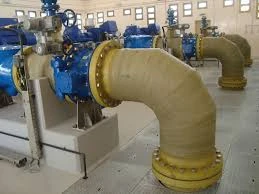
-
 Afrikaans
Afrikaans -
 Albanian
Albanian -
 Amharic
Amharic -
 Arabic
Arabic -
 Armenian
Armenian -
 Azerbaijani
Azerbaijani -
 Basque
Basque -
 Belarusian
Belarusian -
 Bengali
Bengali -
 Bosnian
Bosnian -
 Bulgarian
Bulgarian -
 Catalan
Catalan -
 Cebuano
Cebuano -
 China
China -
 China (Taiwan)
China (Taiwan) -
 Corsican
Corsican -
 Croatian
Croatian -
 Czech
Czech -
 Danish
Danish -
 Dutch
Dutch -
 English
English -
 Esperanto
Esperanto -
 Estonian
Estonian -
 Finnish
Finnish -
 French
French -
 Frisian
Frisian -
 Galician
Galician -
 Georgian
Georgian -
 German
German -
 Greek
Greek -
 Gujarati
Gujarati -
 Haitian Creole
Haitian Creole -
 hausa
hausa -
 hawaiian
hawaiian -
 Hebrew
Hebrew -
 Hindi
Hindi -
 Miao
Miao -
 Hungarian
Hungarian -
 Icelandic
Icelandic -
 igbo
igbo -
 Indonesian
Indonesian -
 irish
irish -
 Italian
Italian -
 Japanese
Japanese -
 Javanese
Javanese -
 Kannada
Kannada -
 kazakh
kazakh -
 Khmer
Khmer -
 Rwandese
Rwandese -
 Korean
Korean -
 Kurdish
Kurdish -
 Kyrgyz
Kyrgyz -
 Lao
Lao -
 Latin
Latin -
 Latvian
Latvian -
 Lithuanian
Lithuanian -
 Luxembourgish
Luxembourgish -
 Macedonian
Macedonian -
 Malgashi
Malgashi -
 Malay
Malay -
 Malayalam
Malayalam -
 Maltese
Maltese -
 Maori
Maori -
 Marathi
Marathi -
 Mongolian
Mongolian -
 Myanmar
Myanmar -
 Nepali
Nepali -
 Norwegian
Norwegian -
 Norwegian
Norwegian -
 Occitan
Occitan -
 Pashto
Pashto -
 Persian
Persian -
 Polish
Polish -
 Portuguese
Portuguese -
 Punjabi
Punjabi -
 Romanian
Romanian -
 Russian
Russian -
 Samoan
Samoan -
 Scottish Gaelic
Scottish Gaelic -
 Serbian
Serbian -
 Sesotho
Sesotho -
 Shona
Shona -
 Sindhi
Sindhi -
 Sinhala
Sinhala -
 Slovak
Slovak -
 Slovenian
Slovenian -
 Somali
Somali -
 Spanish
Spanish -
 Sundanese
Sundanese -
 Swahili
Swahili -
 Swedish
Swedish -
 Tagalog
Tagalog -
 Tajik
Tajik -
 Tamil
Tamil -
 Tatar
Tatar -
 Telugu
Telugu -
 Thai
Thai -
 Turkish
Turkish -
 Turkmen
Turkmen -
 Ukrainian
Ukrainian -
 Urdu
Urdu -
 Uighur
Uighur -
 Uzbek
Uzbek -
 Vietnamese
Vietnamese -
 Welsh
Welsh -
 Bantu
Bantu -
 Yiddish
Yiddish -
 Yoruba
Yoruba -
 Zulu
Zulu
fiberglass food grade equipment
Understanding Fiberglass Food Grade Equipment Safety, Benefits, and Applications
Fiberglass food grade equipment has gained significant attention in the food processing and handling industries due to its unique properties and advantages. This type of equipment caters specifically to the stringent requirements of food safety while enhancing durability and efficiency.
One of the primary reasons for choosing fiberglass in food applications is its inherent safety features. Fiberglass is non-reactive, meaning it does not leach harmful substances into food products, a crucial factor in maintaining food safety standards. This quality helps prevent contamination, making it an ideal choice for environments where hygiene is paramount. Furthermore, fiberglass is resilient against various chemicals commonly used in food processing, allowing for easier sanitation and maintenance without the risk of corroding or degrading the equipment.
Another significant advantage of fiberglass food grade equipment is its lightweight nature, which facilitates ease of handling and installation. Unlike metal equipment, fiberglass is not only lighter but also easier to mold into various shapes and designs. This versatility allows manufacturers to create custom solutions that meet specific processing needs, from intricate food handling tools to large-scale storage containers. Moreover, the smooth surface of fiberglass minimizes the risk of bacterial growth, contributing to a safer working environment.
fiberglass food grade equipment

Durability is yet another key feature of fiberglass equipment. It can resist impacts, scratches, and wear-and-tear better than many traditional materials. This durability extends the lifespan of the equipment, providing cost savings in the long run through reduced replacement and maintenance needs. The equipment's resistance to rust and corrosion also ensures that it retains its structural integrity even in humid or wet conditions, frequently encountered in food processing environments.
Applications of fiberglass food grade equipment are broad and varied. It is commonly used for making containers, tanks, and piping systems that store or transport food products. Additionally, fiberglass is incorporated into various food processing equipment such as conveyor belts, molds, and cutting tools. Its versatility also lends itself well to the pharmaceutical and beverage industries, where strict adherence to safety regulations is imperative.
In conclusion, fiberglass food grade equipment plays a vital role in modern food processing and safety. Its non-reactive nature, lightweight properties, durability, and ease of customization make it an outstanding choice for a variety of applications. As food safety regulations continue to evolve and become more stringent, the demand for reliable materials like fiberglass will only increase. Embracing this innovative technology not only enhances operational efficiency but also ensures that safety remains a top priority in the food industry. Thus, industries investing in fiberglass food grade equipment are making a sound choice that addresses both safety and practicality.









